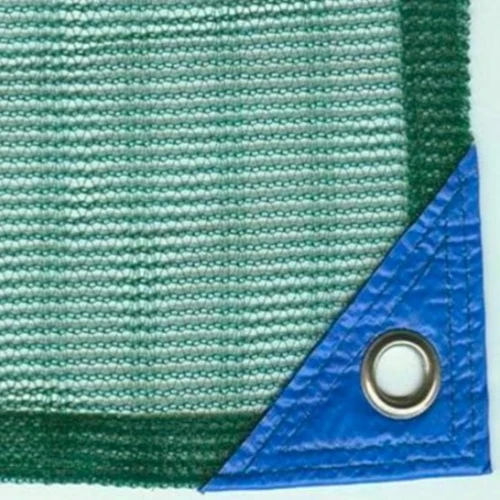-
 Afrikaans
Afrikaans -
 Albanian
Albanian -
 Amharic
Amharic -
 Arabic
Arabic -
 Armenian
Armenian -
 Azerbaijani
Azerbaijani -
 Basque
Basque -
 Belarusian
Belarusian -
 Bengali
Bengali -
 Bosnian
Bosnian -
 Bulgarian
Bulgarian -
 Catalan
Catalan -
 Cebuano
Cebuano -
 China
China -
 Corsican
Corsican -
 Croatian
Croatian -
 Czech
Czech -
 Danish
Danish -
 Dutch
Dutch -
 English
English -
 Esperanto
Esperanto -
 Estonian
Estonian -
 Finnish
Finnish -
 French
French -
 Frisian
Frisian -
 Galician
Galician -
 Georgian
Georgian -
 German
German -
 Greek
Greek -
 Gujarati
Gujarati -
 Haitian Creole
Haitian Creole -
 hausa
hausa -
 hawaiian
hawaiian -
 Hebrew
Hebrew -
 Hindi
Hindi -
 Miao
Miao -
 Hungarian
Hungarian -
 Icelandic
Icelandic -
 igbo
igbo -
 Indonesian
Indonesian -
 irish
irish -
 Italian
Italian -
 Japanese
Japanese -
 Javanese
Javanese -
 Kannada
Kannada -
 kazakh
kazakh -
 Khmer
Khmer -
 Rwandese
Rwandese -
 Korean
Korean -
 Kurdish
Kurdish -
 Kyrgyz
Kyrgyz -
 Lao
Lao -
 Latin
Latin -
 Latvian
Latvian -
 Lithuanian
Lithuanian -
 Luxembourgish
Luxembourgish -
 Macedonian
Macedonian -
 Malgashi
Malgashi -
 Malay
Malay -
 Malayalam
Malayalam -
 Maltese
Maltese -
 Maori
Maori -
 Marathi
Marathi -
 Mongolian
Mongolian -
 Myanmar
Myanmar -
 Nepali
Nepali -
 Norwegian
Norwegian -
 Norwegian
Norwegian -
 Occitan
Occitan -
 Pashto
Pashto -
 Persian
Persian -
 Polish
Polish -
 Portuguese
Portuguese -
 Punjabi
Punjabi -
 Romanian
Romanian -
 Russian
Russian -
 Samoan
Samoan -
 Scottish Gaelic
Scottish Gaelic -
 Serbian
Serbian -
 Sesotho
Sesotho -
 Shona
Shona -
 Sindhi
Sindhi -
 Sinhala
Sinhala -
 Slovak
Slovak -
 Slovenian
Slovenian -
 Somali
Somali -
 Spanish
Spanish -
 Sundanese
Sundanese -
 Swahili
Swahili -
 Swedish
Swedish -
 Tagalog
Tagalog -
 Tajik
Tajik -
 Tamil
Tamil -
 Tatar
Tatar -
 Telugu
Telugu -
 Thai
Thai -
 Turkish
Turkish -
 Turkmen
Turkmen -
 Ukrainian
Ukrainian -
 Urdu
Urdu -
 Uighur
Uighur -
 Uzbek
Uzbek -
 Vietnamese
Vietnamese -
 Welsh
Welsh -
 Bantu
Bantu -
 Yiddish
Yiddish -
 Yoruba
Yoruba -
 Zulu
Zulu
High-Quality Extruded Steel Mesh | Durable & Versatile Solutions
Understanding Extruded Steel Mesh Applications and Benefits
Extruded steel mesh is a versatile material widely used across various industries due to its strength, durability, and adaptability. Made from high-quality steel, this type of mesh undergoes an extrusion process, which shapes the metal into a uniform grid structure. This unique manufacturing method imparts significant benefits, making extruded steel mesh a preferred choice in construction, manufacturing, and other sectors.
One of the primary applications of extruded steel mesh is in the construction industry. It provides enhanced structural integrity for buildings, bridges, and other infrastructures. The mesh serves as a reinforcement material in concrete applications, helping to distribute loads more evenly and reducing the risk of cracking. When used in precast concrete elements, extruded steel mesh ensures that the components maintain their strength and shape under various stress conditions. Additionally, its lightweight nature makes it easier to handle and install, thereby speeding up construction times and reducing labor costs.
Another significant application of extruded steel mesh is in industrial settings. Its durability and resistance to corrosion make it an ideal material for safety barriers, security fencing, and machine guards. Factories and warehouses can effectively use extruded steel mesh to create secure environments, safeguarding both personnel and machinery. Furthermore, it is commonly used in the manufacturing of shelving systems, platforms, and catwalks, where weight-bearing capabilities are essential.
extruded steel mesh

Extruded steel mesh also finds its place in the agricultural sector. It is utilized for livestock fencing, ensuring the safety and security of animals while allowing for ventilation and visibility. Moreover, it can be integrated into equipment used for irrigation, providing efficient water management solutions. The mesh's ability to withstand harsh weather conditions makes it a reliable option for long-term agricultural applications.
Beyond its structural advantages, extruded steel mesh is highly customizable. Manufacturers can produce it in various sizes, shapes, and wire diameters, allowing clients to select the most suitable option for their specific needs. This flexibility extends to surface finishes as well; galvanized and powder-coated options enhance the mesh's resistance to environmental factors, thereby prolonging its lifespan.
The sustainability of extruded steel mesh is another notable benefit. Steel is a recyclable material, meaning that it can be repurposed at the end of its life cycle without compromising its quality. This characteristic aligns with growing environmental concerns, allowing industries to adopt practices that minimize waste. By using recycled steel in the production of extruded mesh, companies contribute to a circular economy, promoting responsible sourcing and usage of materials.
In conclusion, extruded steel mesh stands out as a crucial material that combines strength, versatility, and sustainability. Its myriad of applications across diverse industries testifies to its invaluable contributions to modern construction, manufacturing, and agriculture. As industries continue to prioritize durability and efficiency, extruded steel mesh will undoubtedly remain a go-to material, satisfying the demanding needs of today's economy while also adhering to environmental considerations. By investing in extruded steel mesh, companies not only enhance their operational capabilities but also commit to sustainable practices that benefit society as a whole.
-
Shipping Plastic Bags for Every NeedNewsJul.24,2025
-
Safety Netting: Your Shield in ConstructionNewsJul.24,2025
-
Plastic Mesh Netting for Everyday UseNewsJul.24,2025
-
Nylon Netting for Every UseNewsJul.24,2025
-
Mesh Breeder Box for Fish TanksNewsJul.24,2025
-
Expanded Steel Mesh Offers Durable VersatilityNewsJul.24,2025











